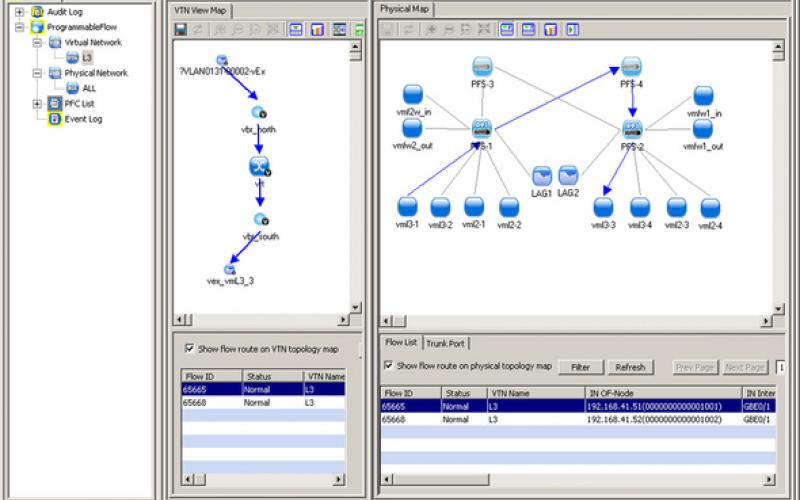Gnodal
Judges: Kurt Marko (InformationWeek), Greg Ferro (Ethereal Mind)
18 products vied for honors as the best piece of network gear this year, ranging from offerings from the industry's heavyweights to innovative products and technologies from small startups.
This year's giant-slayer and category winner is Gnodal's 2RU, 72-port, 40-gigabit Ethernet (GbE) switch, the GS0072. Founded just five years ago, Gnodal is a small startup based in Bristol, U.K., far from the Silicon Valley hub of the network industry. The company made its Interop debut in 2011 with a line of 1U 10- and 40-GbE switches, each using a single instance of its custom Peta switch ASIC. This year, Gnodal pushed ASIC integration to new heights by incorporating 12 of its Peta chips into a single chassis, effectively creating a self-contained, fully redundant 40-GbE fabric-in-a-switch--what CEO Fred Homewood calls a "fat tree in a box."
The GS0072 couples 12-switch ASICs, each of which acts as a non-blocking crossbar to all ports, into a "Gnodal fabric" with almost 7 Tbps of throughput. That means the GS0072 isn't just an extremely fast 40 GbE switch, with latency as low as 282ns, but also the perfect fabric backplane for Gnodal's 10-GbE ToR edge device, the 72-port GS7200. Because Gnodal-to-Gnodal switch processing is handled within the ASIC hardware, latency between any node in a leaf-spine mesh, which can scale out to as many as 4896 ports, is less than 500ns. Other features automatically implemented in the Gnodal control plane include dynamic load balancing and distributed, inter-switch packet fairness. In sum, the GS0072 puts the most 40-gigabit port into a single low-latency switch yet, while its Layer 2 fabric features actually deliver what other vendors have long been talking about.
There were other strong finalists in the Networking category. The Mellanox SX1024 packs 60 ports in a 48x10 GbE, 12x40 GbE 1U package that makes it an electronic and mechanical tour de force. A follow-up to last year's Best of Interop finalist (the 40-gigabit SX1036) that uses the same proprietary SwitchX silicon, the SX1024 makes the perfect edge companion. Pairing them in a 2-by-8 fat tree provides 288 non-blocking 10-GbE ports with 750ns maximum latency while burning only 1100 Watts.
Another finalist, the PLX TeraPHY TN8045, confirms the effect merchant silicon is having on the switching market. But unlike the proprietary Peta or SwitchX chips, PLX has its sights firmly on the open market. The PLX TeraPHY TN8045 is a quad-port 10GBASE-T (copper) PHY with 10GBase-KR backplane interface to an Ethernet switch or Mac device in a low-cost ($82), high-density (25x25mm) package. It's a device destined to bring on a new generation of inexpensive 10-gigabit switches and multi-port interface cards. --Kurt Marko
RECOMMENDED READING:
Interop 2012 Preview: 12 Cool Products
Interop Preview: Big Data, Cloud, Mobility In Spotlight
Mobile Security Gets The Spotlight At Interop
Clouds, Consumerization, And The IT Toolbox
VMWare's New Bid To Simplify Desktop Virtualization
Governance Meets Cloud: Top Misconceptions
Dell Delivers Desktop-as-a-Service
Amazon 7 Cloud Promises: Hype Vs. Reality
Google Data Centers: How Low Can Power Go?
Converting Your Product To Cloud Service: Lessons Learned
Disaster Recovery Cloud Services Show Promise
New Tool Vets Cloud Provider Security
Whose Job Is Virtualization Security?


















